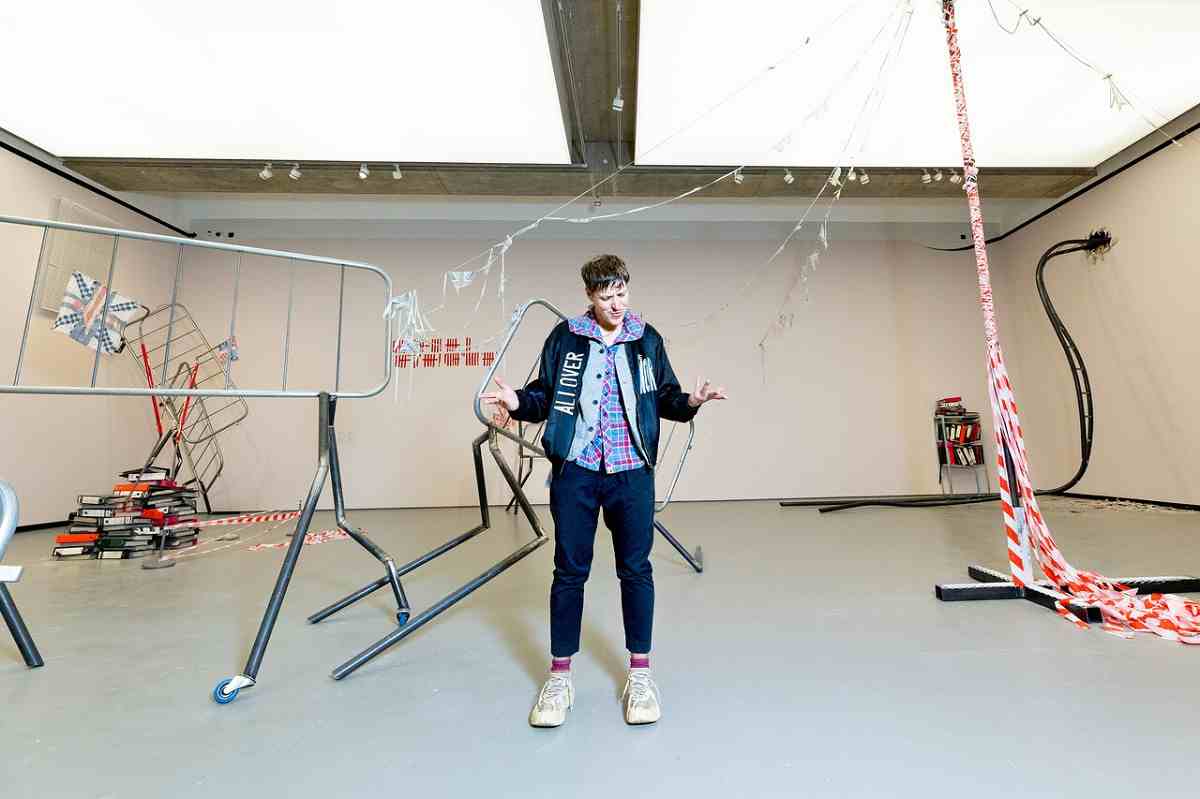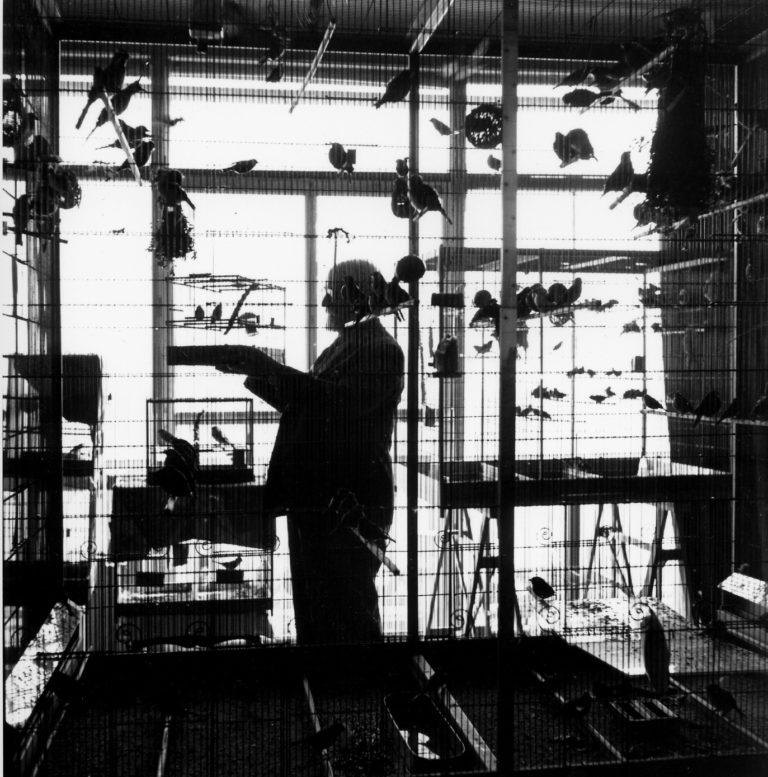Holes in White and Holes in Cream with Front Light on Left
2005 - Photography (Photography)
David Haxton
In the mid to late 70s David Haxton turned to photography, and similarly to his output in film, his photographs show reverberations of his perspective as a painter. As inferred from the title—and the titles of most of his work—Haxton has a methodical, near-scientific approach to studying and documenting the effects of light. In Holes in White and Holes in Cream with? Front Light on Left , two large perforated sheets of paper hung side by side and a single spotlight are the subject of his scrutiny. The symmetry of the composition here is broken: by the light emanating from the spotlight on the left, and by difference between the white and cream tones of the sheets, which is made starker by the position of the spotlight. Akin to his single screen-films, Haxton wanted to produce photographs that somehow referred to themselves and their own fundamental nature, which is what led him to solely use photographic backdrop paper and light as his subject. As part of his process he would often begin by taking a Polaroid of the cut paper constructions to study the effect of light in the composition, and would later photograph in larger format negatives.
Although trained as a painter, David Haxton is known for his exploration of light through the mediums of photography and film. Early in his career, in the 1960s and 1970s, he began making installations where he would recreate spaces inside the gallery, and it was through the inclusion of film in these early pieces that he became interested in film’s potential to manipulate space. Examples include the installation Four Screen Films, where he reconstructed his studio in San Diego as projections onto large freestanding screen, as well as an unrealized proposal asking to reconstruct the interior of the Sidney Janis Gallery within the Leo Castelli Gallery simultaneously with an exhibition by Robert Morris. Over the following decades, his focus geared towards film and he began exploring the elements that he considered essential to the medium such as light, the illusion of space, and the reality of the space where the film is projected. Consequently, he created several single-screen films that use light as an effect to both highlight the medium’s two-dimensional nature, and bring forth its abstract and painterly qualities. Later, he began using photography to investigate similar concerns, and as with the films, his approach to photography remained consistent for decades. Several of his bodies of work consist of photographs of spot lit, large sheets of perforated paper casting shadows in the spaces in which they are hung. In the compositions Haxton uses the spotlights to ‘paint’ with light, emphasizing the importance of their position in defining our perception of the materials and space.
Colors:
Other related works, blended automatically
» see more

© » KADIST
David Haxton
197016 films is a selection of David Haxton’s single-screen videos, which he began producing in the 1970s as a continuation of some of the conceptual underpinnings of his earlier film installations...
Related works sharing similar palette
» see more

© » KADIST
In New Mexico, Camacho investigated the reasons why the inhabitants of a village decided to change its name Truth or Consequences in the 50’s; with Group Marriage, an on-going project as part of the Amsterdam Spinoza Manifestation (2009), he petitions the Dutch parliament to open civil marriage to groups of citizens who would marry each other...

© » ARTS EQUATOR
KNOTS: An open letter to 艺族 STRANGER | ArtsEquator Thinking and Talking about Arts and Culture in Southeast Asia ArtsEquator Viewpoints The Pond Photography September 19, 2019 By Ke Weiliang (1,131 words, 6-minute read) Dear 艺族 STRANGER, After spending my Saturday afternoon with you at the Esplanade Theatre Studio, I struggled long and hard to make sense of the titular ‘knots’ that your inaugural play endeavoured to grapple with...
Other works by: » David Haxton
» see more

© » KADIST
David Haxton
197016 films is a selection of David Haxton’s single-screen videos, which he began producing in the 1970s as a continuation of some of the conceptual underpinnings of his earlier film installations...
Related works found in the same semantic group
» see more

© » ART CENTRON
Turner Prize Winner Jesse Darling Claims the Spotlight - Artcentron Home » Turner Prize Winner Jesse Darling Claims the Spotlight ART Dec 15, 2023 Ξ Leave a comment Turner Prize Winner Jesse Darling Claims the Spotlight posted by ARTCENTRON Jesse Darling, Turner Prize Winner with Delirious at Towner Easbourne...





